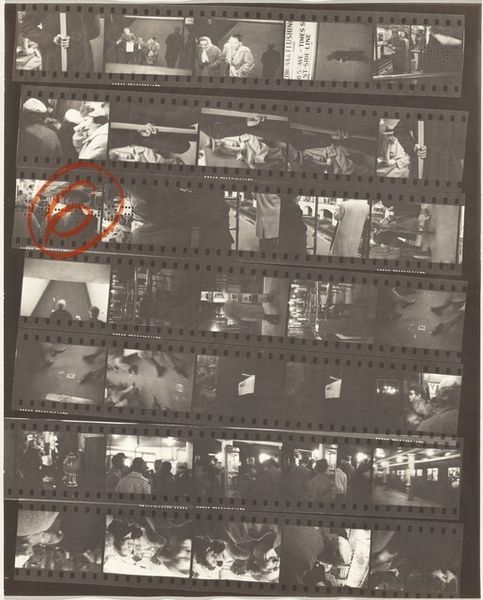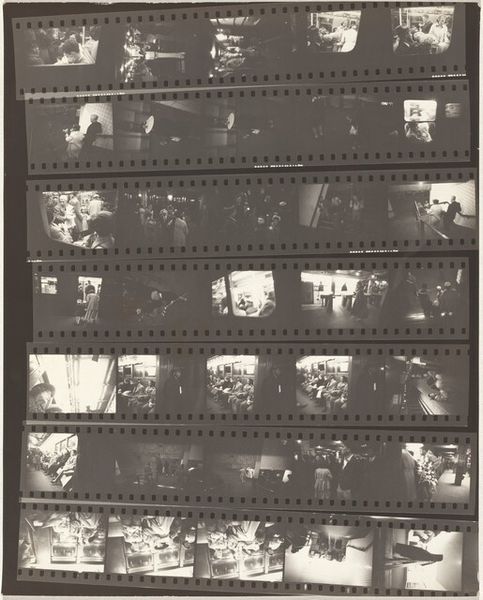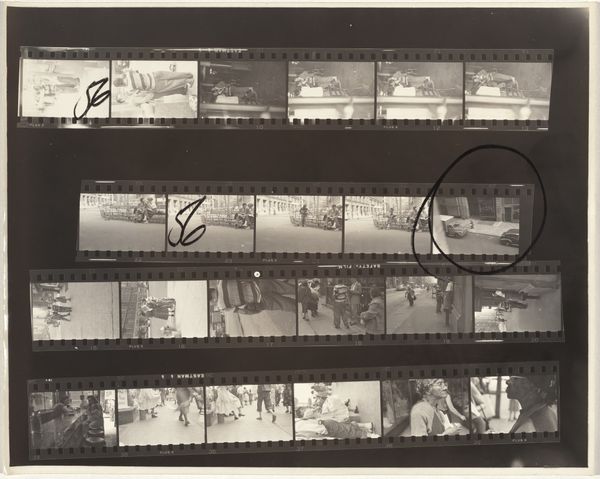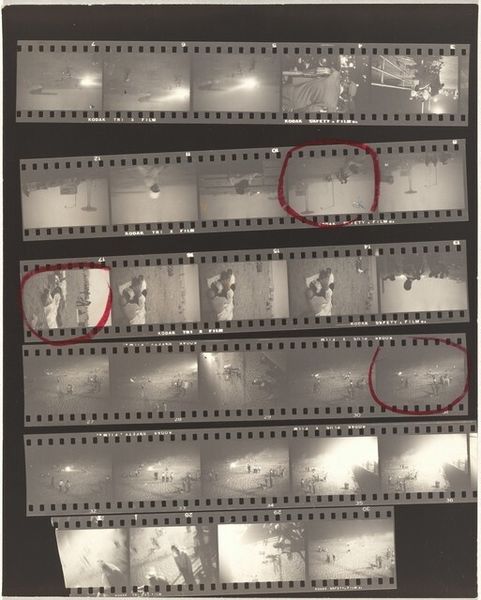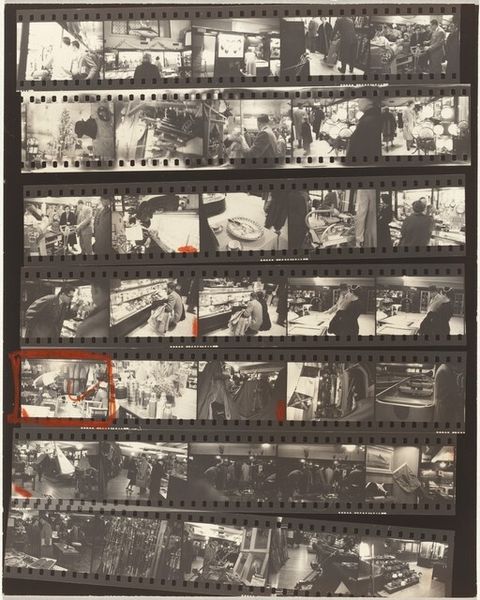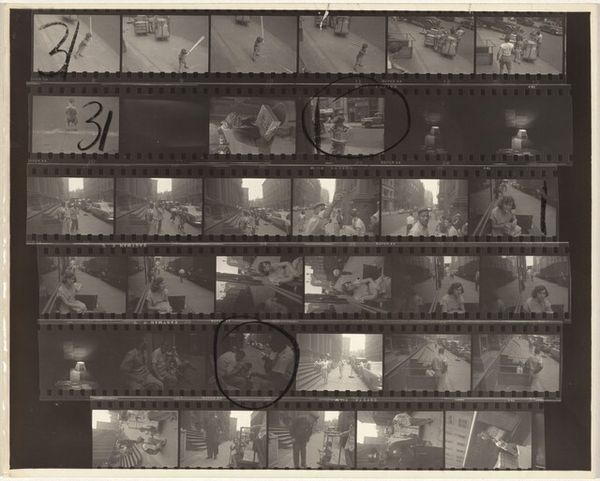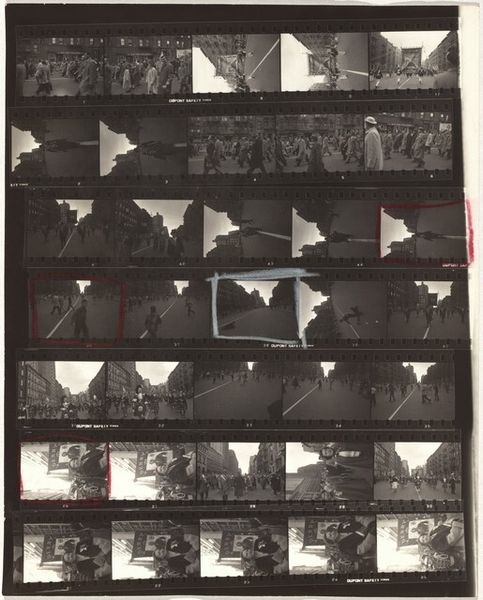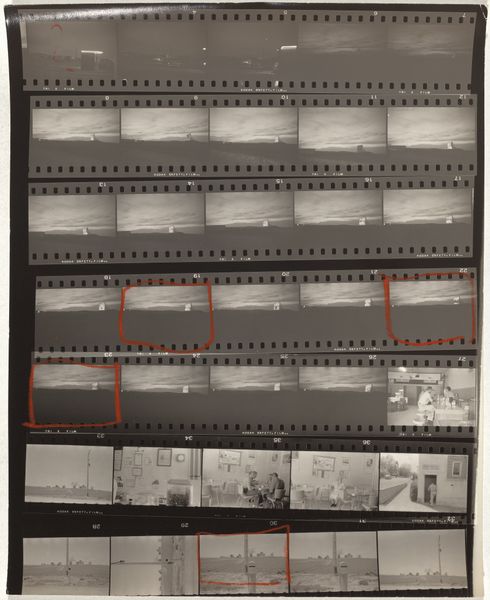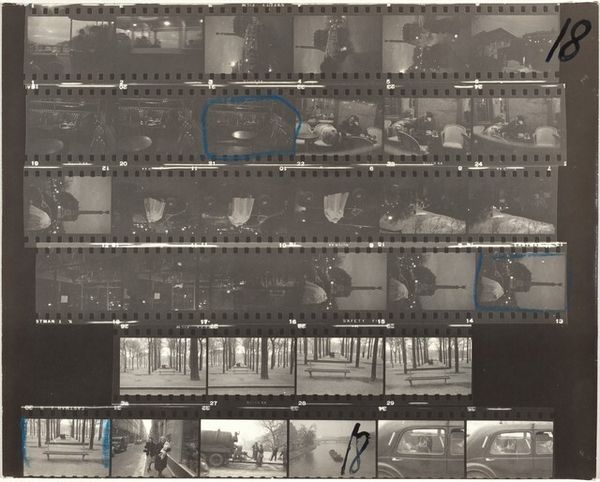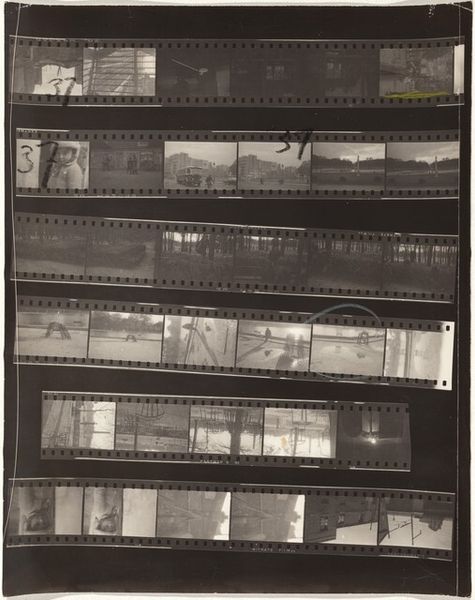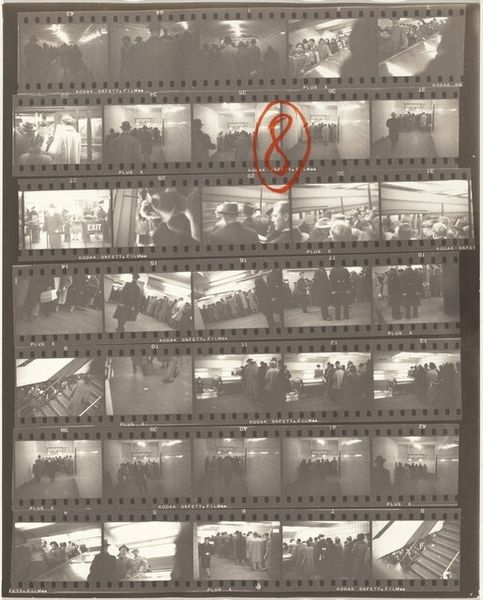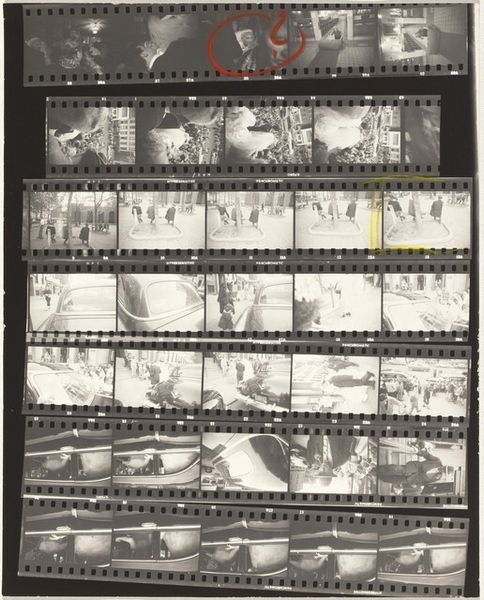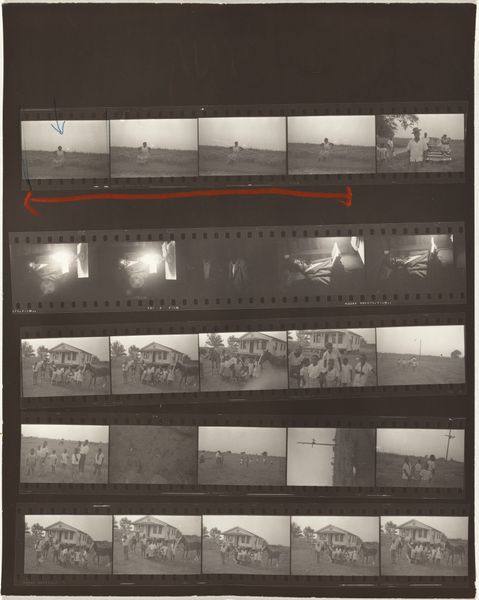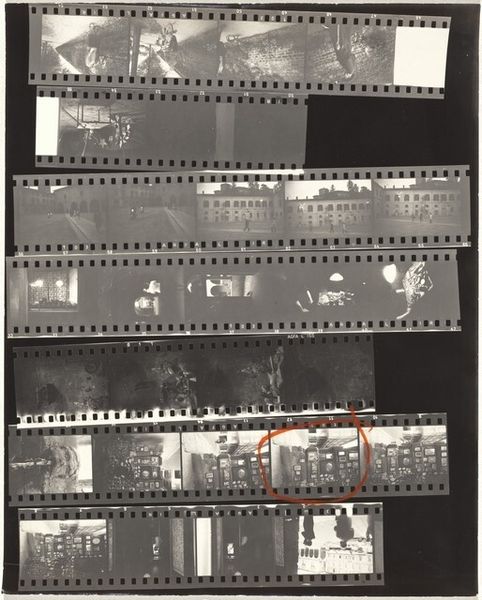
Dimensions: overall: 25.3 x 20.3 cm (9 15/16 x 8 in.)
Copyright: National Gallery of Art: CC0 1.0
Editor: We’re looking at "Guggenheim 53/Detroit 25--Belle Isle" by Robert Frank, a gelatin silver print from 1955. What strikes me immediately is the contact sheet format; we get a glimpse into Frank's selection process. How does this format influence how you approach analyzing the individual images? Curator: The contact sheet, rather than a single, isolated image, is paramount. It compels us to consider the syntagmatic relationship between images. The sequencing, the variations on a theme, the darkroom’s gesture in editing...these are all compositional elements. Editor: So, it's less about the "decisive moment" in one photograph and more about the relationships *between* these moments? Curator: Precisely. Consider the variations in light and shadow across the frames, how figures appear and disappear. Note, for example, the recurrence of horizontal lines – shorelines, horizons – acting as a visual anchor throughout. Does this compositional repetition evoke a sense of rhythm, or perhaps constraint? Editor: I see the horizontals now. The varying depths of field also jump out. Some frames are sharp, others blurry…does this introduce a temporal element, a sense of passing time and fleeting experiences? Curator: Indeed. The strategic deployment of focus directs the eye and structures our engagement with the depicted scene. This juxtaposition of sharp and soft rendering enriches the work and speaks to the dynamic relationship between perception and representation. This speaks to Frank's modern take on the landscape tradition. Editor: Thinking about Frank's landscape...seeing the images together this way shifts my perspective. The landscape is not fixed, it's experienced and captured with intention. Curator: Absolutely. Our reading shifts to contemplate intention and decision-making when provided access to the artist's compositional thoughts and decisions.
Comments
No comments
Be the first to comment and join the conversation on the ultimate creative platform.
